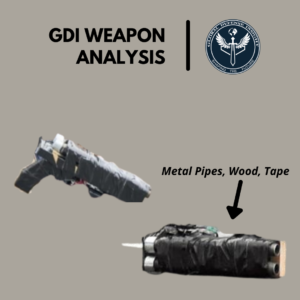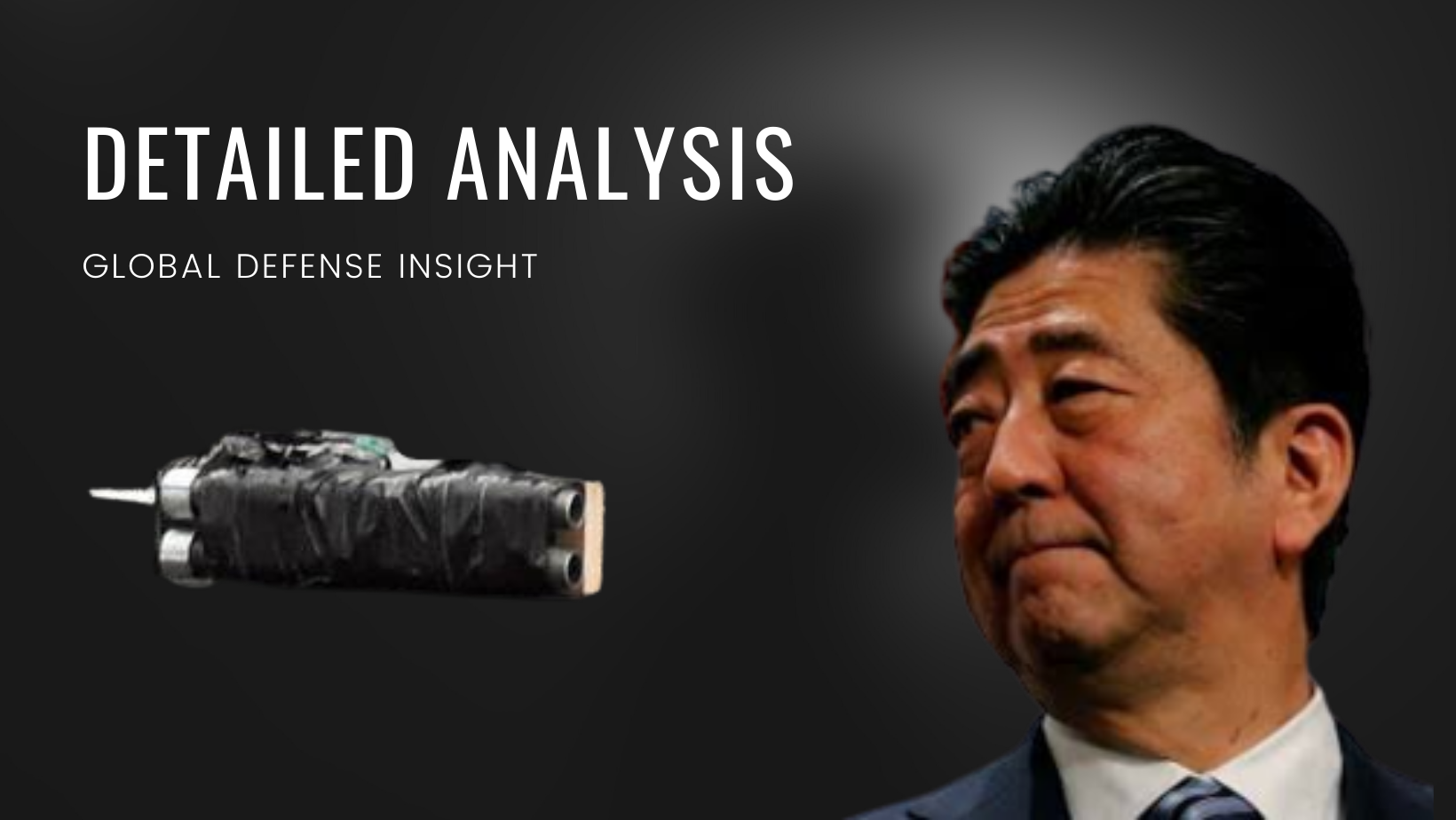Former Prime Minister Shinzo Abe, Japan’s longest-serving leader, died on Friday hours after he was shot while campaigning for a parliamentary election, shocking a country in which political violence is rare and guns are tightly controlled.
Global Defense Insight conducted a detailed analysis of the gun used in this assassination. Here is our analysis:
Table of Contents
ToggleMain Components of gun:
Pipes, Tape, Wooden blocks, Black Powder, wires, electric battery
Read More: Should Pakistan need to reconsider its Israel Policy?
How it works:
The suspect an electronically fired projectile weapon, using a wooden or cardboard plank as support. Two metal pipes were strapped using tape with wires and a battery.
The pipes were filled with black powder, followed by the projectile(s) stuffed into them to create an airtight space at the end of the barrel where the black powder was stored. The ends of the pipes were sealed tight with caps and two wires connected to each end. Given that BP is a low explosive, the battery provided energy to the wires to heat up or spark, ultimately setting off a detonating charge which propelled the projectiles forward.

There’s no possibility that was a shotgun since a shotgun uses cartridges and any other small arms ammunition does not set off using electrocution.
Exclusive Analysis by: Mahmeen Babur
The author is a professional security consultant who works at Hataff Security Systems and provides extensive security services to various entities and infrastructures.












